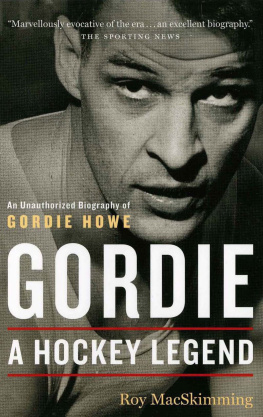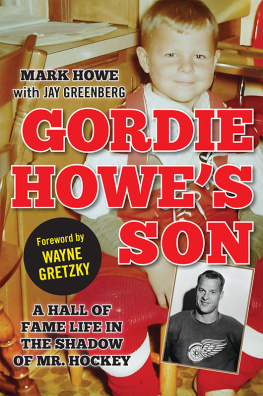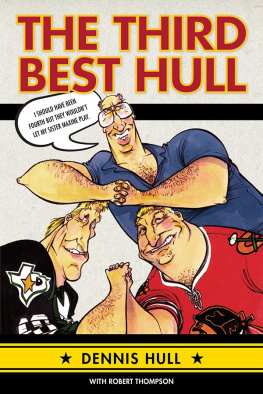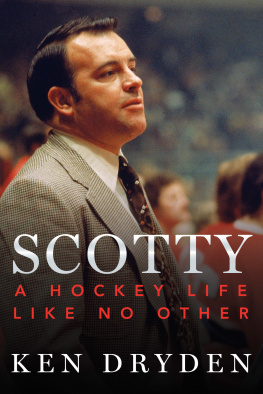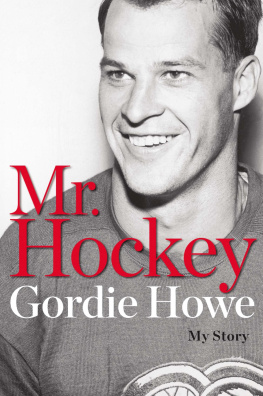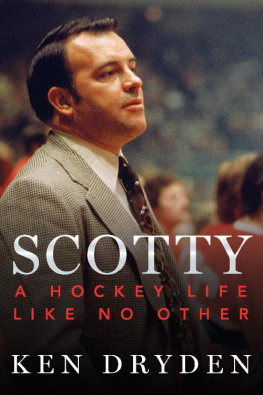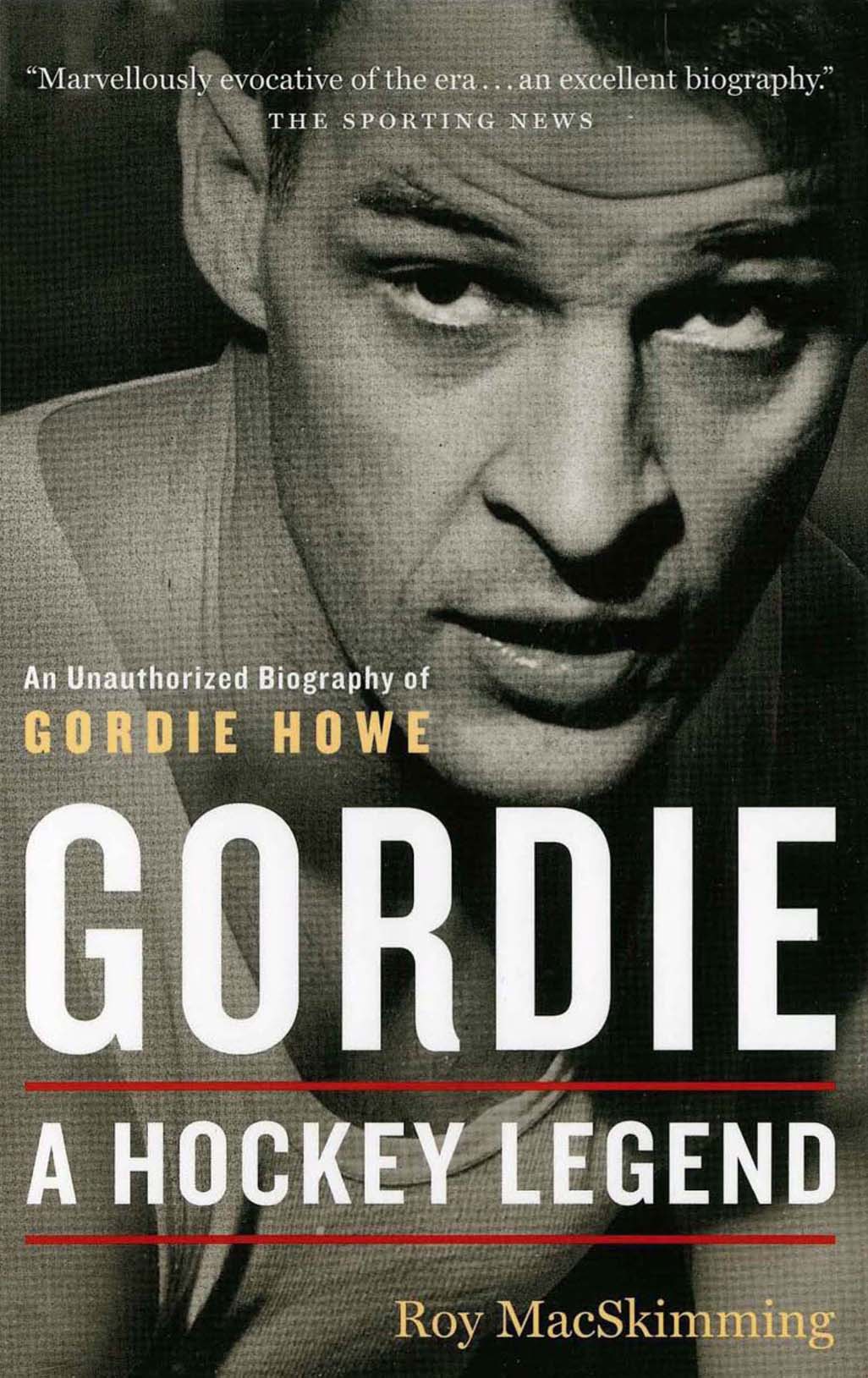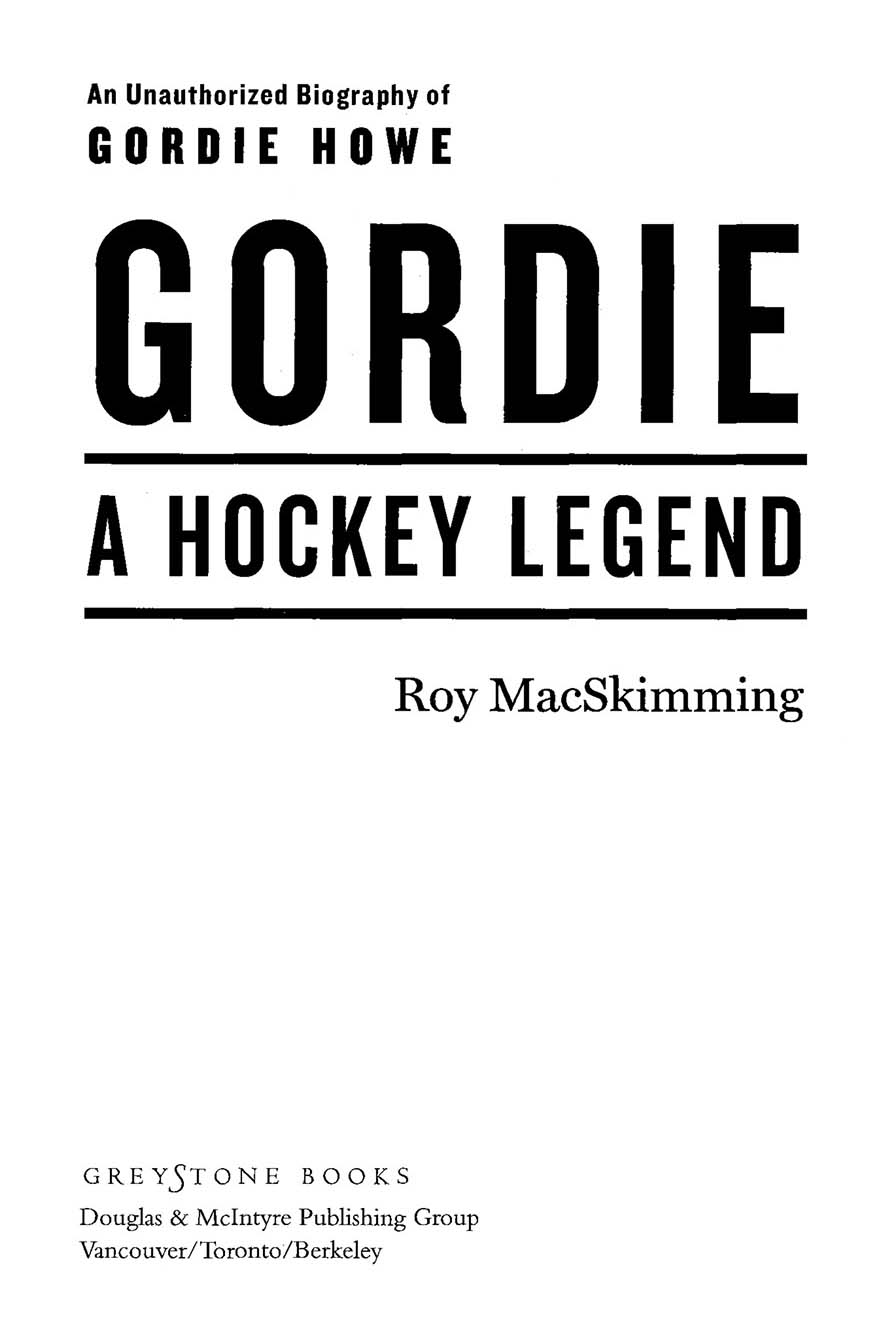Introduction to the New Edition
Even for a hockey god whose career is measured in superlatives, 2003 should have been a landmark year for Gordie Howe. It marked sixty years since hed begun his last season in hometown Saskatoon before departing for stardom in the east. It marked thirty years since hed amazed the sports world by coming out of retirement to play for the Houston Aeros alongside two of his sons. And it marked the seventy-fifth birthday of a man who continued playing the game he loved until he was a fifty-two-year-old grandfather.
At three-quarters of a century old, despite knee replacements, brain surgery, assorted lost teeth, a catalogue of fractures and a daily diet of searing arthritic pain that most of us can only imagine, Gordie Howe was in robust health, physically and mentally. Since the death in 2000 of his once-hated rival and belated friend, Maurice (Rocket) Richard, Howe was indisputably the greatest living link to the glories of the National Hockey Leagues six-team era. For that reason, as much as for his abundance of scoring records, most of them exceeded only by Wayne Gretzky, Howe has remained an icon. Witnessing his appearances at card-show signings or NHL all-star weekends, you never cease to be amazed by his magnetic star power in attracting around-the-block line-ups of old and young.
But theres even more to the Howe mystique. Hes not only revered for his achievements but beloved, in a time of million-dollar salaries paid to players who couldnt carry his skates, for his old-fashioned honour, humour and humility. He still has that rare gift for reaching out to an awestruck kid, as he once did to eleven-year-old Gretzky, and making him or her laugh. Just take a look at the photographs in the pages within.
To crown 2003, Howe would also be celebrating the golden anniversary of his marriage to his agent, business manager and biggest all-time booster, Colleen Howe. But one terrible sadness would cast a shadow over the familys celebrations: Colleen would be there more in body than in mind or spirit. The year before, at the age of seventy, shed been diagnosed with a form of dementia known as Picks diseasea degenerative ailment related to Alzheimers, with similar symptoms of forgetfulness and problems in judgement. Picks disease is incurable. Colleen, to whom family has always been paramount, sometimes has difficulty recognizing her children and closest friends.
An emotional man, Howe is devastated by the drastic changes in the woman whose practical judgement he always relied on. The active, even hectic existence they once shared as partners in business as well as life is shattered. Ive never had so many worries in my life, he told a reporter. Im home all the time now. You have to be constantly aware. We have an alarm system, and whenever a door opens theres a ring. I go like hell when it rings.
A photograph rich in pathos appeared in The Detroit News showing the couple smiling bravely, Gordie in his Red Wings sweater extending his arm protectively around his wifes shoulder. The image poignantly expressed vanished glories. At the same time, it portrayed an indomitable courage in facing up to lifes cruel surprises.
Not so very long before, Colleen Howe had been running the couples business enterprises as president of Power Play International, Inc. in Michigan. Shed been indefatigable in pursuing her twin objectives: promoting the Howe legend and fundraising for childrens causes through the Howe Foundation.
No one had ever doubted the sincerity of the couples charitable work. Yet many had shaken their heads over Colleens occasional excesses in managing Gordies retirement. Because hockeys toughest practitioner always accepted Colleens judgment in worldly matters, his trust sometimes landed him in strange places. Howe is the most modest of heroes (his old teammate Marty Pavelich says later in this book, hes as humble today as the day I met him), so it was ironic that some of the Howes retirement capers contained an immodest amount of self-promotion. More than anything, this reflected Colleens ambitions for them both. During 1993 she promoted a sixty-five-city North American tour to celebrate the sixty-fifth birthday of Mr. Hockey, a trademark that Mrs. Hockey arranged to have legally registered. Although many in professional hockey viewed the birthday tour as grandiose showmanship, it also pulled in money for childrens charitiesnearly $1 million, according to the Howes.
Four years later, on October 3, 1997, they grabbed media attention again. Gordie, then aged sixty-nine, stepped onto the ice for a single shift during a home game of the minor-league Detroit Vipers of the International Hockey League. The idea was to make him the only human on the planet to have played professional hockey in six decades. His illustrious career hardly needed such a spurious postscript.
The stunts only benefit may have been boosting sales of Howe-related products. Some time later, on the mrhockey.com Web site operated by Power Play International, the avid collector could purchase, for only US$499, an autographed replica of the Vipers sweater Howe had worn. If the price seemed high, it made the US$599 price tag for a replica of his original Detroit Red Wings sweater seem like a bargain. In either case, a signed photograph of Howe in the act of autographing your sweater would be thrown in free. Also available through the Web site were autographed pucks, photographs, lithographs, hockey sticks and Gordie Howe bobble-head dolls, available in home or away sweaters. The new millennium also saw the unveiling of two limited-edition breakfast cereals: Mr. Hockey Honey Nut Toasted Oats and Gordie Howe Frosted Flakes. Fans could enjoy the ultimate communion with Gordie by sitting down to a bowl of his cereal. By that point, the commodification of Mr. Hockey had got a bit out of hand.
Yet in a way, you can hardly blame the Howes. After many years of being exploited financially by NHL owners, Gordie and other retired players of his generation had to mount an extended legal battle in the 1990s just to recover pension funds long owed to them. Its understandable theyd become anxious to extract the maximum benefit from their fame. Ever since 1968, when Gordie discovered Red Wings management had been lying about his being the best-paid player in the league, Colleen had been negotiating on his behalf and driving the best possible bargain for his services: a role Gordie heartily approved of. The Howes were bound and determined that Gordie would never be taken advantage of again. And so Colleen engineered the US$2-million four-year deal taking Gordie, Marty and Mark Howe to Houston and the World Hockey Association.
The Howes wariness of exploitation extends to authors seeking to write about Gordie. As one of those, I was troubled that on publication of this book in 1994, the Howes went on record as saying it was intended as a spoiler, detracting from the book they planned to produce themselves. In truth, my publisher and I had previously but unsuccessfully proposed to the Howes a collaboration on an authorized biography of Gordie. But in the end, the two books that appeared within a year of each other could hardly have been more different.
This one is a hockey biography, pure and simple, focusing on Gordies playing career. The volume that the Howes self-published in 1995, and... Howe!, subtitled An Authorized Autobiography by Gordie and Colleen Howe with Tom DeLisle, is a kind of family album consisting of edited interviews with various members of the Howe clan. In it, Gordies voice is only one among many; and his hockey career is only one subject among many, surrounded by the reminiscences of Colleen and their four children. Its the kind of book that Colleen had told me she wanted to see published, rather than a straight biography of Gordie. Living in his shadow all those years had been tough for her and the kids, shed said at the time, and now they too deserved their share of the limelight.

